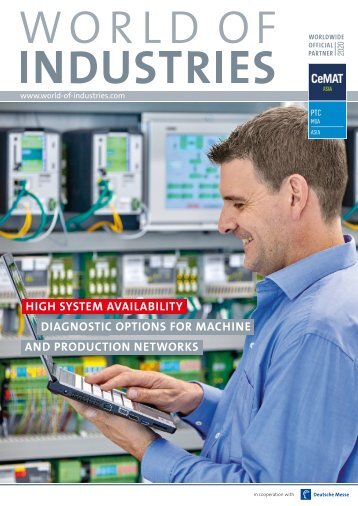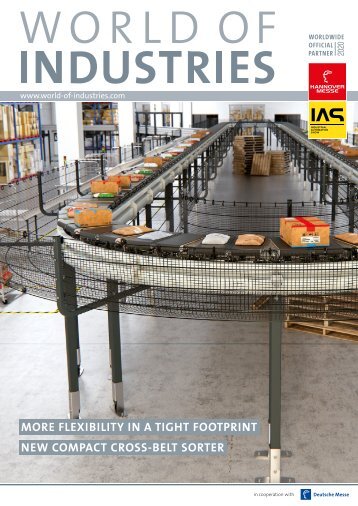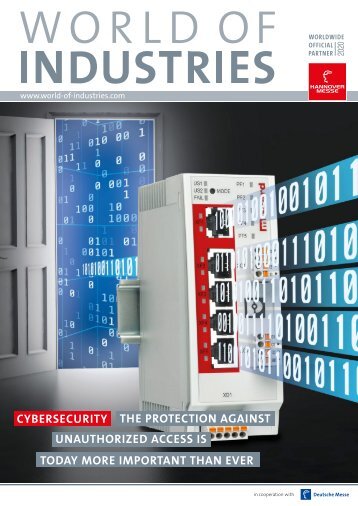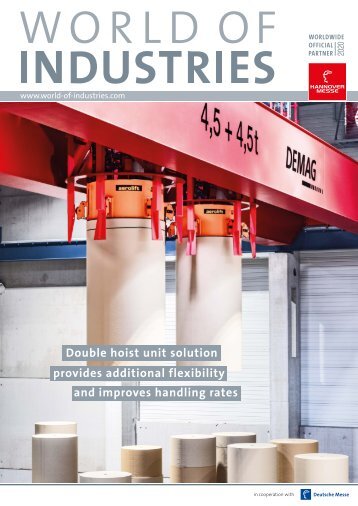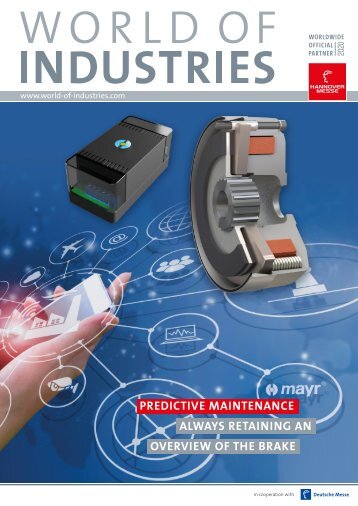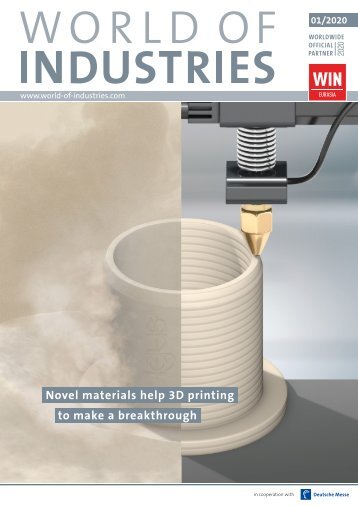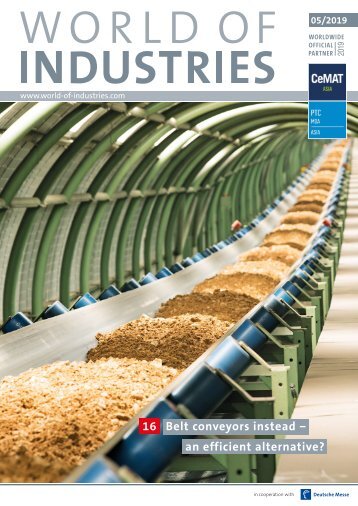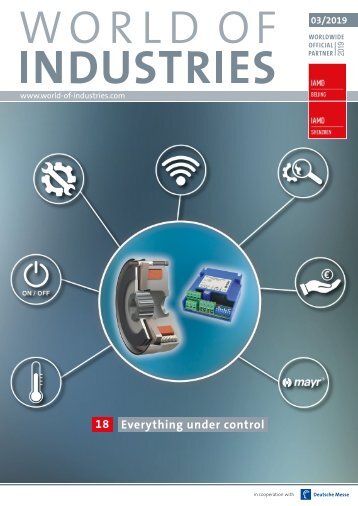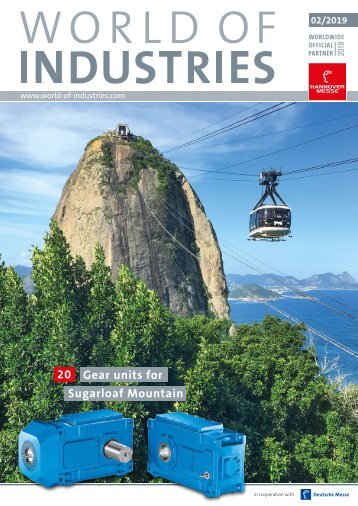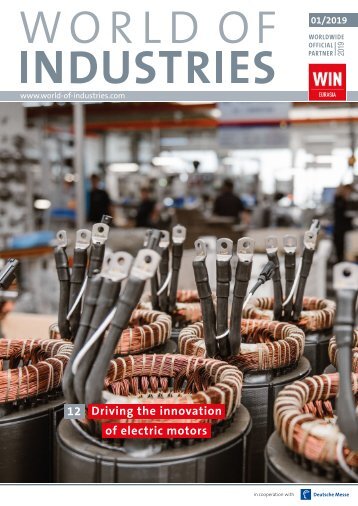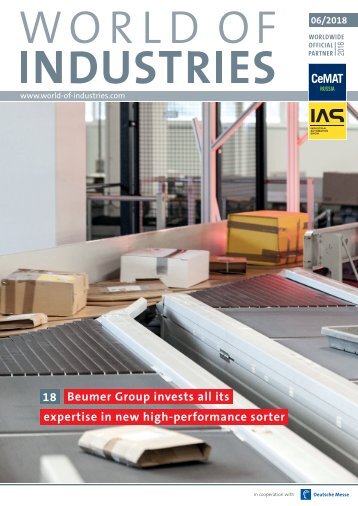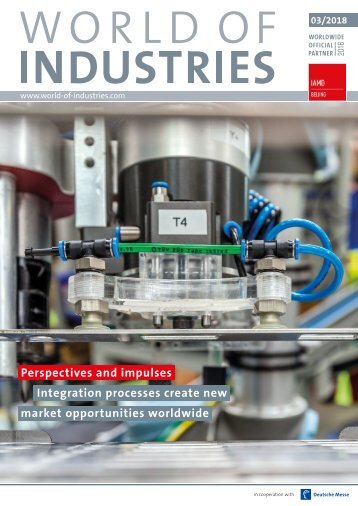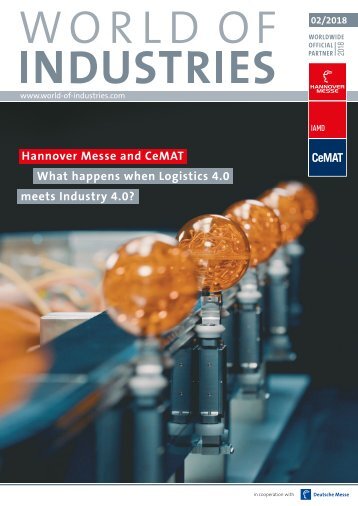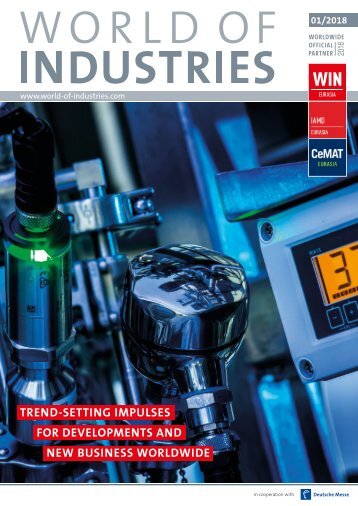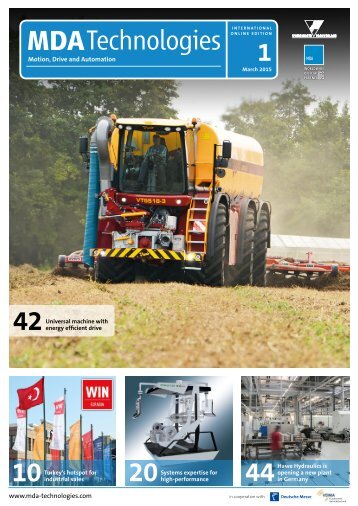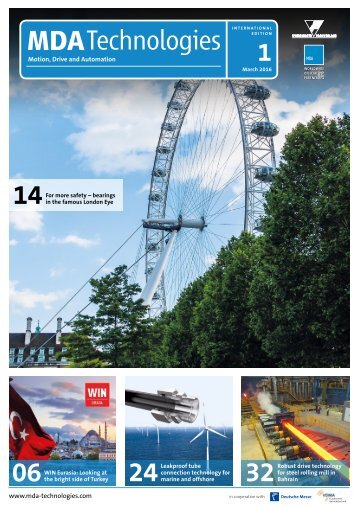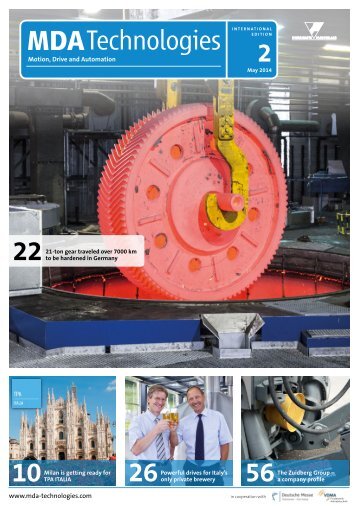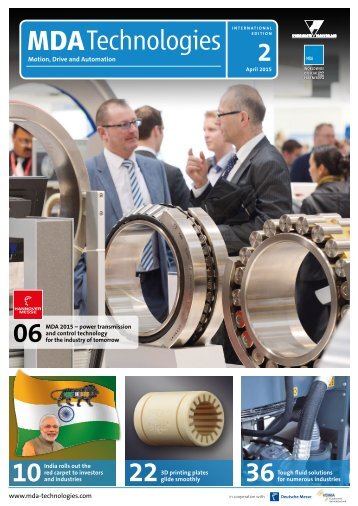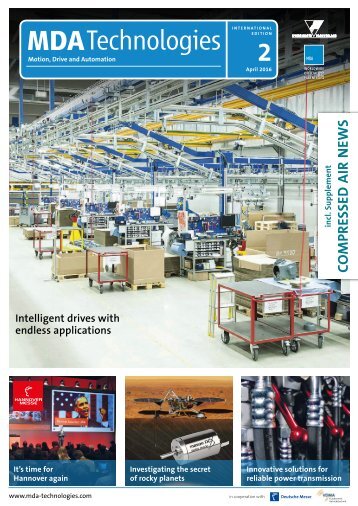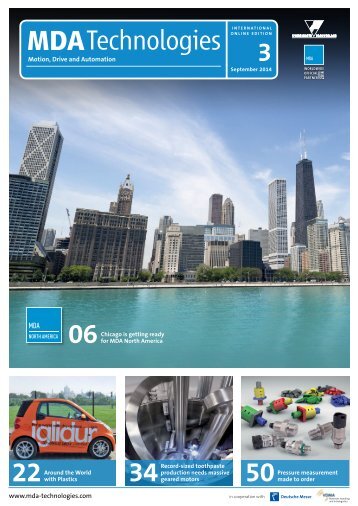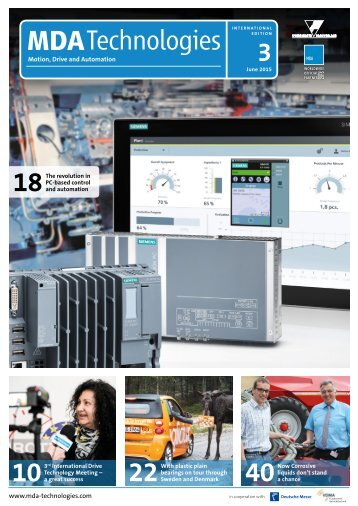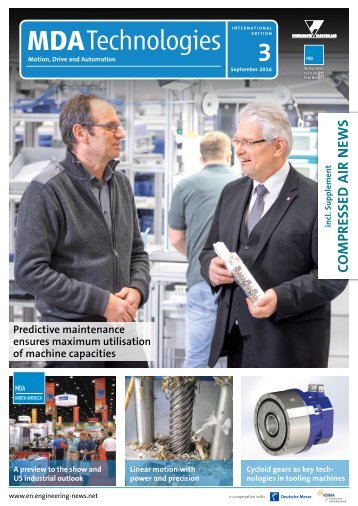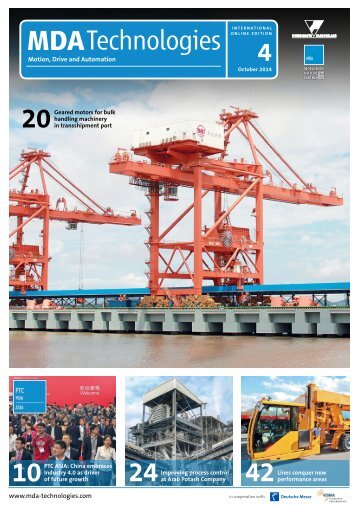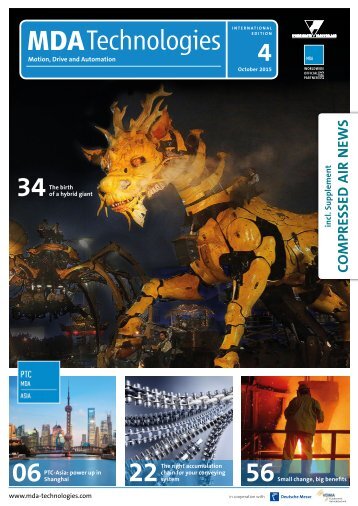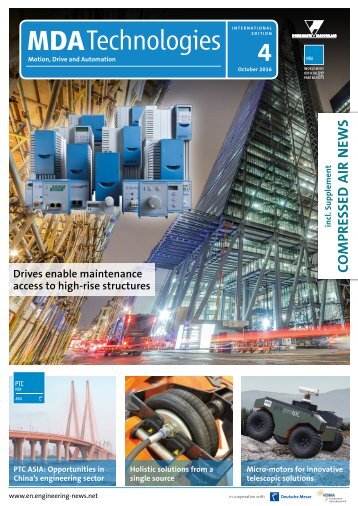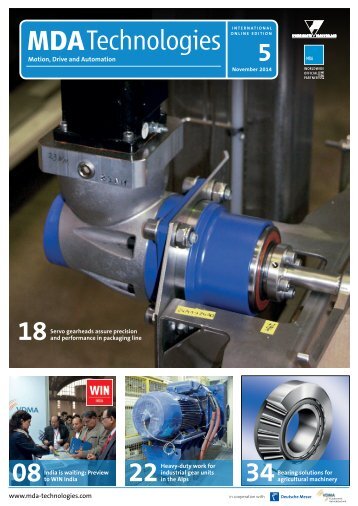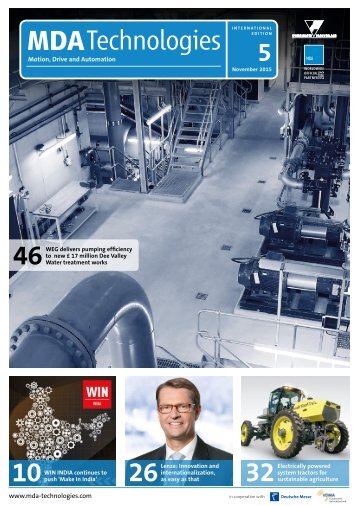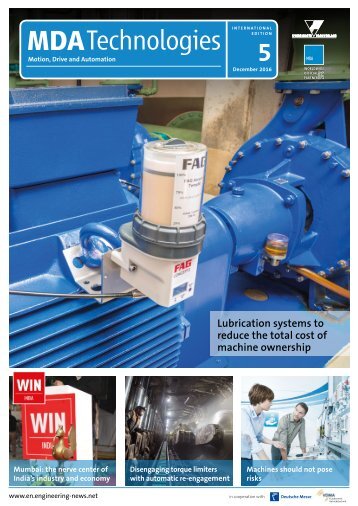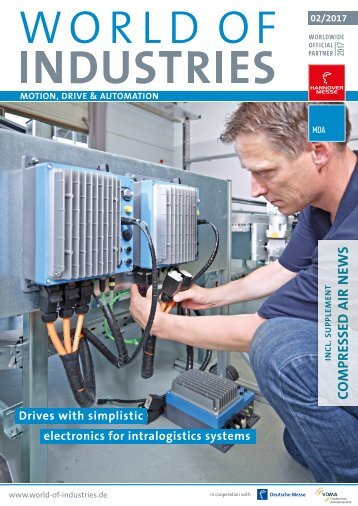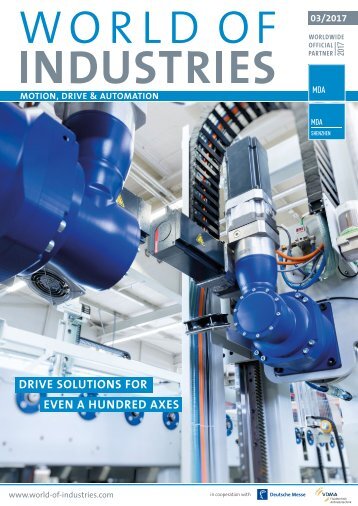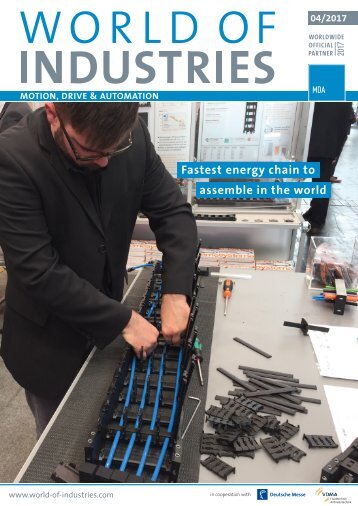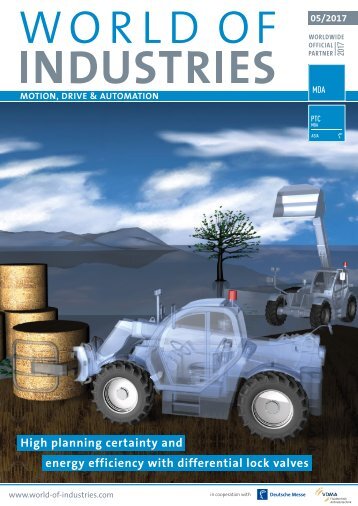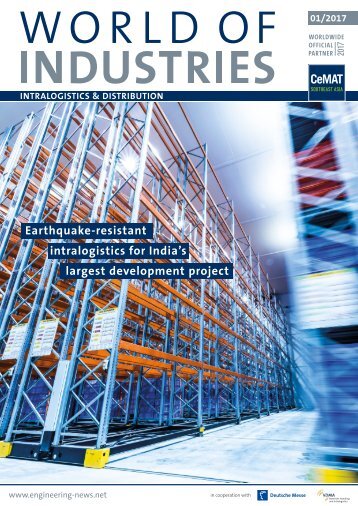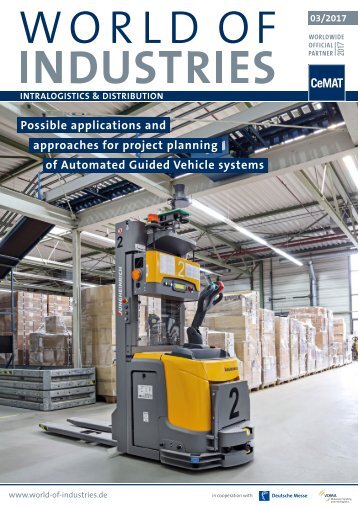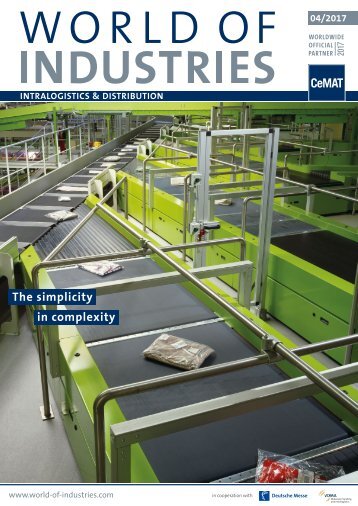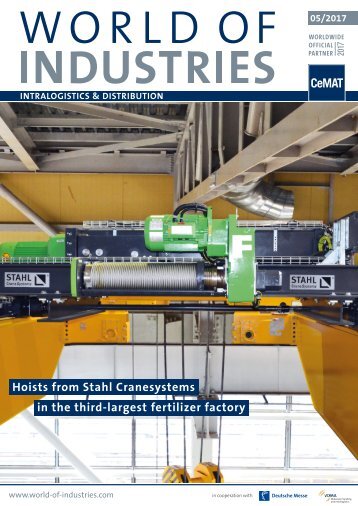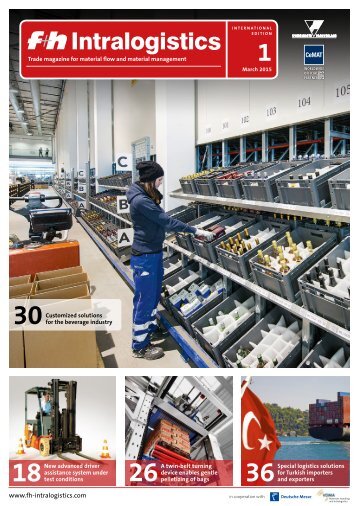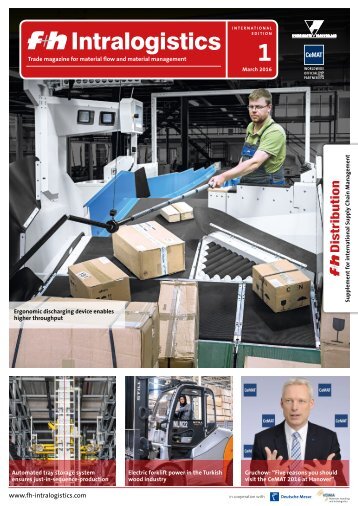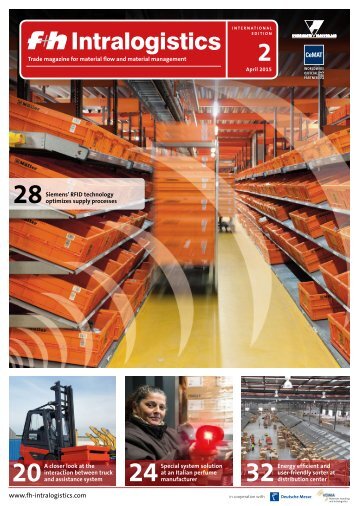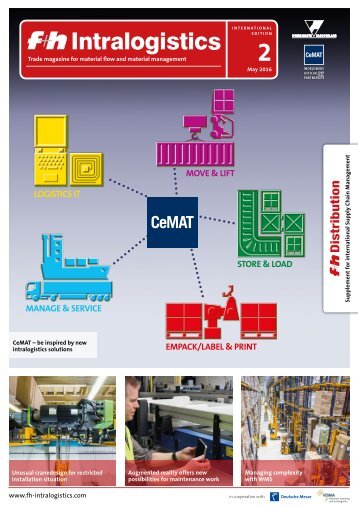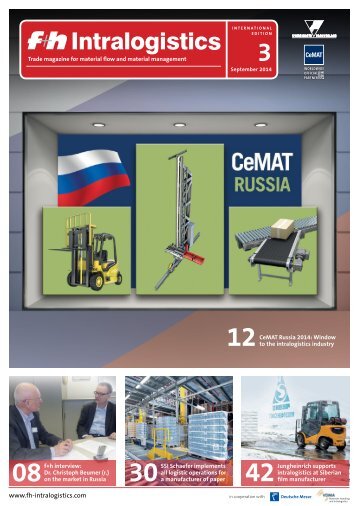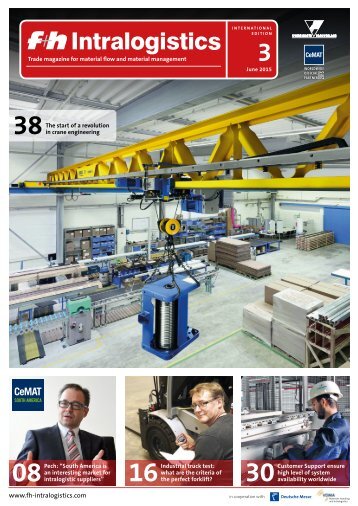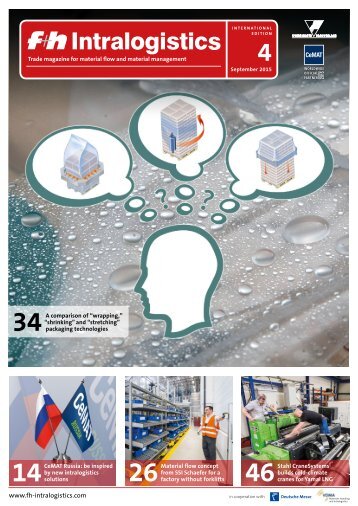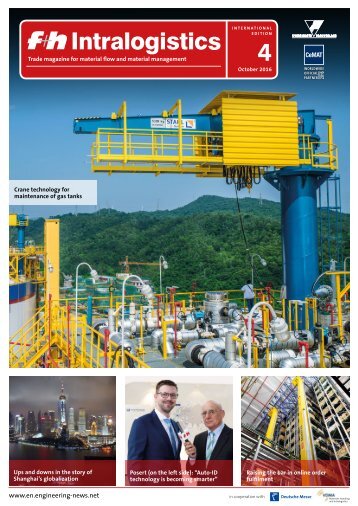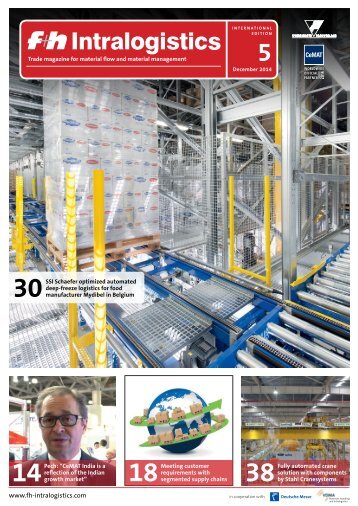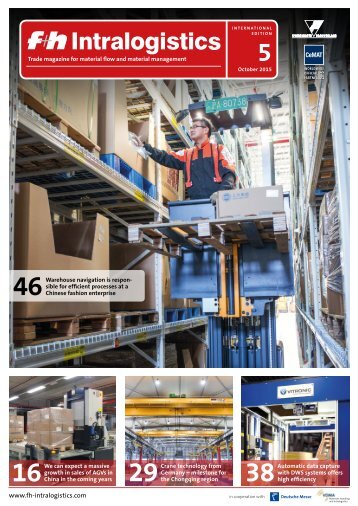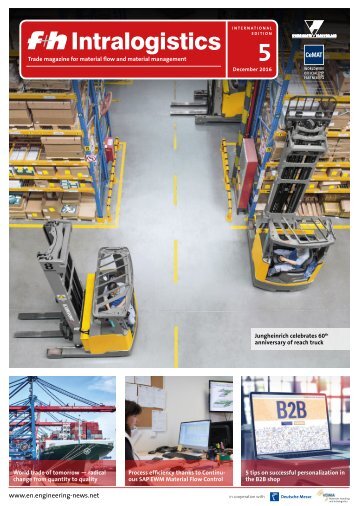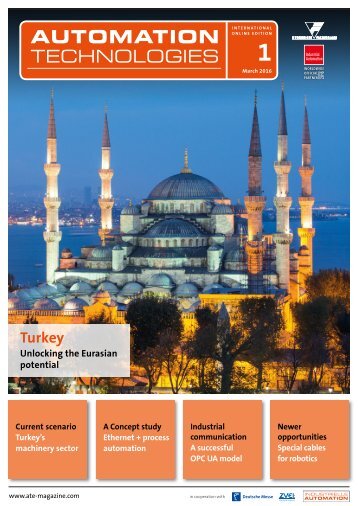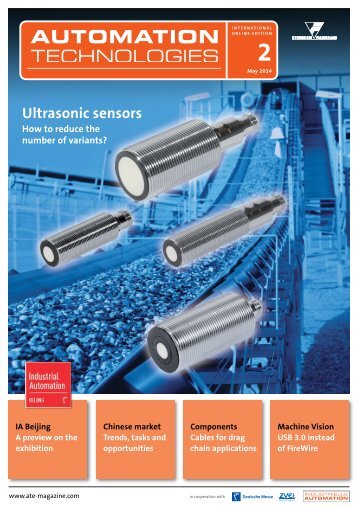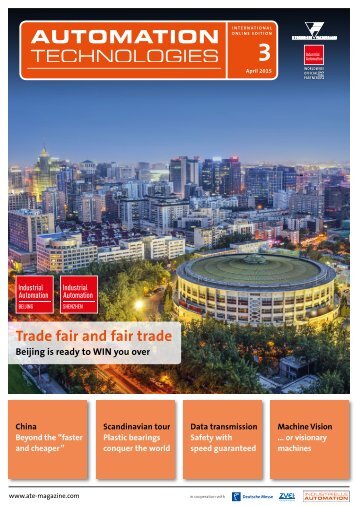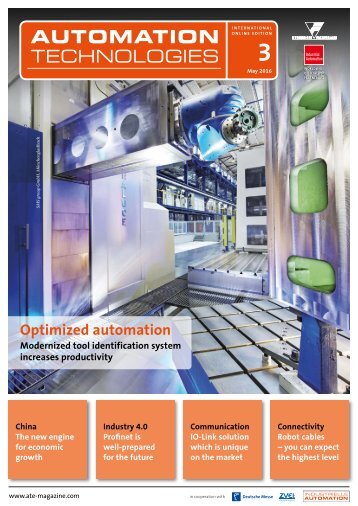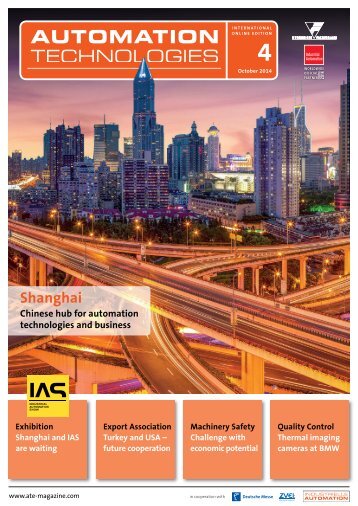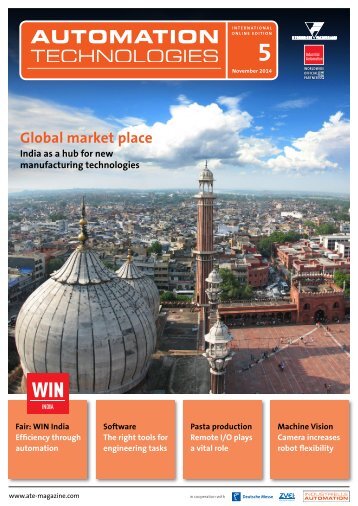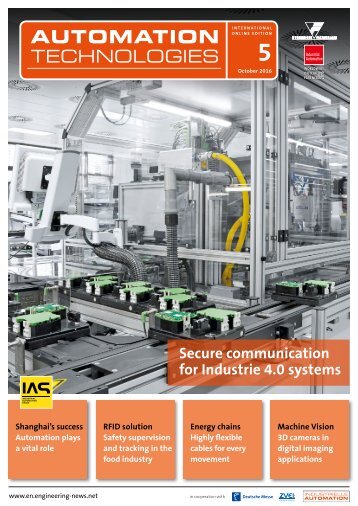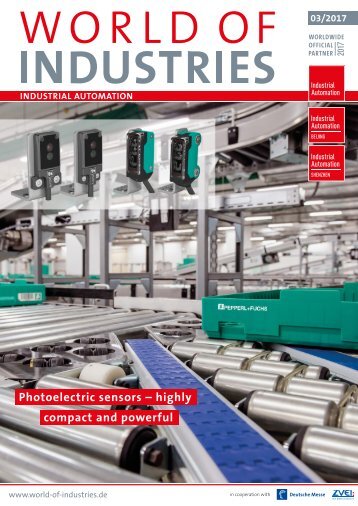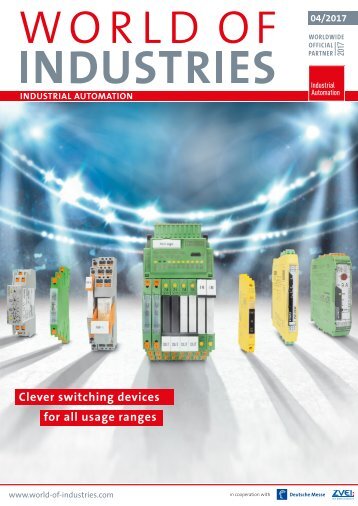f+h Intralogistics 2/2015
- Text
- Fuh
- Intralogistics
IDENTIFICATION Siemens´
IDENTIFICATION Siemens´ RFID technology optimizes supply processes for drugstore chain Optimizing the supply to over 700 chain stores throughout Europe was the motive for a renowned drugstore chain to comprehensively employ RFID technology in the warehousing (goods traffic). The now wireless identification and verification of correctness and direction of all roll cages during the loading of the trucks reduce incorrect deliveries to a minimum. At other places in the warehouse network, too, logistics processes become more efficient and transparent with that. From its headquarters in Ulm-Jungingen, Germany, the drugstore chain Müller Ltd. & Co. KG supplies over 700 stores at home and abroad with traditional drugstore goods, multimedia products, toys and stationery, materials for store design and much more. For this purpose, the company operates a central warehouse, to which several field warehouse in the surrounding area are linked. In the central warehouse, the flows of goods come together. In here, the shipments for the chain stores are consolidated and loaded onto trucks or swap bodies. Especially during peak times – such as the weeks before Christmas – this represents a logistical challenge, when up to 25,000 roll cages (dollies) (Image 01) have to be order-picked and filled daily in two shifts. A dolly consists of several small and/or large transport crates, which are assigned to a pedestal as well as a store order via barcode scanner, filled with the goods ordered and then assembled into truckloads by hand and/or automatically. Doublestacked, 132 dollies fit into a swap body – averaging 140 truckloads per day. Together with the increased handling rate, incorrect deliveries and thus complaints from the stores increased as well, which necessitated extra work for additional deliveries. In the future, this is to be avoided, while at the same time increasing the efficiency and transparency of the intralogistics – also at other places in the central and field warehouses. RFID for optimized processes Targeted from the very beginning was an RFID solution by Siemens with contactlessly readable and writable data media (transponders/tags). In initial experimental setups, this solution has proven to be very efficient and economical. For the goods issue in the central and field warehouses as well as for the extensive materials handling area, customized Siemens RFID solutions were developed. For their connection to the higher-level warehouse management system “LISA”, the mercatis information systems GmbH of Ulm, Germany, was retained, which has been maintaining the system for many years. Operator of the warehouses is the Drogerie-Dienst (Drugstore Service) Ulm GmbH – a logistics service provider and wholly-owned subsidiary of Müller. Goods Issuing practically error-free To improve the goods issue processes at a total of 50 loading ramps/gates (Image 02), of which over 30 are in the central warehouse, an installation on the basis of the RFID system Simatic RF600 was developed, implemented and – during running warehouse and delivery operations – optimized. The gates are the interface between warehouse and truck (chain store) and a highly frequented, potential error source. To largely rule out incorrect deliveries, each gate is equipped with a reader of the type RF670R, to which two pairs of RFID antennas of the type RF640A are connected. The antennas cover the area in front of the gate and/or in front of the truck, and are each activated (triggered) to read by two motion sensors. The range of the antennas to the left and right of every gate is adjusted and algorithmically monitored to only capture roll cages that are passing through the corresponding gate and not a neighboring one, which could be possible due to the range of the UHF system. By reading twice one after another, a simple but efficient way of direction monitoring was created. From the direction, the system automatically recognizes whether dollies are loaded or unloaded. Successful read operations as well as read errors or incorrect loading processes not conforming to target specifications are acoustically signaled to employees and also visualized on the touchscreen of a Simatic IPC477D industrial PC. The loading progress is clearly depicted as well. Location and status of still missing dollies can be viewed on the higher-level warehouse management system. The RFID readers Simatic RF670R communicate via TCP/IP-native and XML messages with the associated industrial PCs, which are connected over Ethernet to the warehouse management system. The individual dollies are uniquely identified and thus assigned to a specific loading/store order by means of an RFID tran- 28 f+h Intralogistics 2/2015
IDENTIFICATION sponder of the type RF630L made of durable plastic, which is glued into an indentation for protection. The self-adhesive tags contain a so-called dogbone antenna and the actual RFID chip. All approximately 190,000 dollies in circulation will gradually be fitted with this tag. Damaged tags can be easily replaced at any time and registered anew in the warehouse management system using the handheld reader Simatic RF680M. The read quality is constantly monitored. The configuration and commissioning software Simatic RF-Manager Basic contributed greatly to the speedy implementation and optimization of the overall system. In conjunction with the new reader firmware for the RF670R, all relevant setting for antennas, data sources, read triggers, etc. can be conveniently made with it on a networked PC. “We optimized the RFID system at one gate and then simply transmitted the configuration to all others and fineadjusted it via the RF-Manager,” states Uwe Lindner, logistics project manager at the Drogerie-Dienst Ulm GmbH. Material handling integrated Somewhat easier was the integration of the RFID systems at several read stations along the materials handling in the central warehouse and in the new, fully Siemensequipped warehouse Ulm-North. Issues here involve placing the order picked transport crates – which have been handed over to an automatic sorting system – on “tagged” dollies and individually channeling them into the specified supply process. For the identification of the dollies on the conveyor route, the reader RF630R with two external antennas RF620A each is employed. The simple and convenient integration into the Simatic automation systems and the compact form factor distinguish the products used. The readers are optimally About Siemens prepared for the application in metallic environments thanks to high interference immunity and special algorithms. “Extremely valuable in this environment was the updated reader firmware V2.0, which – among other things – made adjusting the transmitting power to the prevailing conditions very user-friendly,” says Lindner. I.e., the so-called power-ramp algorithm enables the gradual increase of the power of an antenna. Compared to a constant power setting, the advantage is that the power only increases until a transponder is detected. This avoids high power settings and limits side effects such as overshooting or interfering with neighboring reader applications. The algorithm works antenna-specifically; each individual antenna can thus be optimally adjusted, which greatly accelerated the setup in this project. “Currently, the read rate of the Siemens RFID system is over 99 percent, which drastically reduces, nearly eliminates, incorrect deliveries in comparison with the previous process, where only visual inspections were made by employees,” confirms Lindner. Furthermore, the automatic documentation of all goods movements in the warehouse management system simplifies tracking & tracing and enables conclusions regarding optimization potential to be drawn. “The functionality is right and the availability of the overall system is very high. From our perspective, the investment has paid off.” Armin Haaf as well, responsible at mercatis for the software-side connection of the whole to the higher-level warehouse management system, is very satisfied with the solution implemented. Initially, he was skeptical about an RFID solution, since a warehouse can hold a variety of interference sources, which may alternate, e.g., reflections and signal attenuation caused by water-containing products (such as shampoos) and tin cans (such as pet food). He, too, has been won over by the smooth im- Siemens AG (Berlin and Munich) is a global technology powerhouse that has stood for engineering excellence, innovation, quality, reliability and internationality for more than 165 years. The company is active in more than 200 countries, focusing on the areas of electrification, automation and digitalization. One of the world’s largest producers of energy-efficient, resource-saving technologies, one of the leading providers of offshore wind turbine construction, a leading supplier of combined cycle turbines for power generation, a major provider of power transmission solutions and a pioneer in infrastructure solutions as well as automation, drive technology and software for industrial environments. The company is also a leading provider of medical imaging equipment – such as computed tomography and magnetic resonance imaging systems – and a leader in laboratory diagnostics as well as clinical IT. In fiscal 2014, which ended on September 30, 2014, Siemens generated revenue from continuing operations of €71.9 billion and net income of €5.5 billion. At the moment, the company has around 343,000 employees worldwide. 01 From the central warehouse Ulm-Jungingen, the Drogerie-Dienst Ulm GmbH, a subsidiary of Müller, order-picks the goods and supplies over 700 chain stores throughout Europe 02 On over 18,000 dollies per day, the goods order-picked from several warehouses are assembled to store deliveries and loaded onto truck in the central warehouse plementation and the error-free operation. Apart from the fact that due to the absence of malfunctions, he has very little opportunity to familiarize his colleagues from the service department with the processes. Further expansions planned The positive experience has encouraged the persons in charge to equip other areas with Siemens RFID technology. For instance, the newly constructed warehouse for toys and stationery in Ulm-North – in large parts implemented under the guidance of Siemens – was automated according to the proven model. In the expansion currently being planned, all of the intralogistics is to be monitored by up to 100 RFID readers. The final result strived for is a completely transparent, faultless flow of materials, which also integrates the goods received in the chain stores and/or intermediate storage facilities. An automated generation of shipping documents by the system is also planned. Photos: Siemens www.siemens.com/rfid f+h Intralogistics 2/2015 29
- Page 1 and 2: Intralogistics Trade magazine for m
- Page 3: TABLE OF CONTENT 06 News and inform
- Page 6 and 7: Worldwide News Combilift invests EU
- Page 8 and 9: INTRALOGISTICA ITALIA Intralogistic
- Page 10 and 11: INTERNATIONAL MARKETS I INTERVIEW O
- Page 12 and 13: INTERNATIONAL MARKETS I INTERVIEW a
- Page 14 and 15: FROM RESEARCH Creation of timetable
- Page 16 and 17: FROM RESEARCH uniform timing layout
- Page 18 and 19: LOGISTICS MANAGEMENT Study by Mieba
- Page 20 and 21: INDUSTRIAL TRUCKS I FORKLIFT TEST P
- Page 22 and 23: INDUSTRIAL TRUCKS I FORKLIFT TEST t
- Page 24 and 25: INTRALOGISTICS ICR relies on Junghe
- Page 26 and 27: INTRALOGISTICS platform or type ECE
- Page 30 and 31: MATERIAL FLOW I INTERVIEW The fully
- Page 32 and 33: MATERIAL FLOW Beumer makes sortatio
- Page 34 and 35: MATERIAL FLOW SDI combines sorting
- Page 36 and 37: E-BUSINESS Integrated logistic solu
- Page 38 and 39: E-BUSINESS 02 Automatic order conso
- Page 40 and 41: LOGISTIC BUILDINGS Selecting a suit
- Page 42 and 43: GLOBAL BUSINESS Bottom-up rather th
- Page 44 and 45: 44 f+h Intralogistics 3/2014
- Page 46 and 47: FORKLIFT TEST I INDUSTRIAL TRUCKS A
Inappropriate
Loading...
Mail this publication
Loading...
Embed
Loading...

